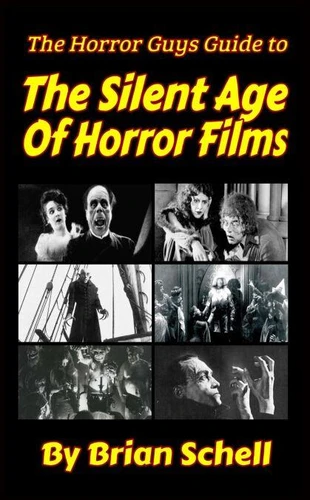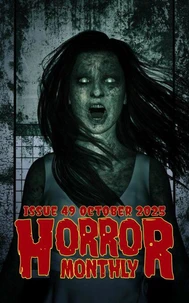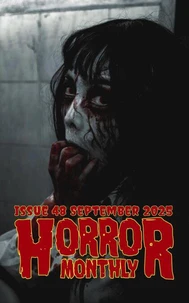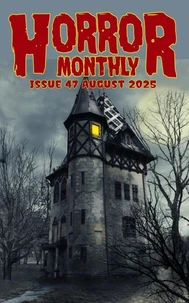The Horror Guys Guide to The Silent Age of Horror Films. HorrorGuys.com Guides, #4
Par :Formats :
Disponible dans votre compte client Decitre ou Furet du Nord dès validation de votre commande. Le format ePub protégé est :
- Compatible avec une lecture sur My Vivlio (smartphone, tablette, ordinateur)
- Compatible avec une lecture sur liseuses Vivlio
- Pour les liseuses autres que Vivlio, vous devez utiliser le logiciel Adobe Digital Edition. Non compatible avec la lecture sur les liseuses Kindle, Remarkable et Sony
- Non compatible avec un achat hors France métropolitaine
 , qui est-ce ?
, qui est-ce ?Notre partenaire de plateforme de lecture numérique où vous retrouverez l'ensemble de vos ebooks gratuitement
Pour en savoir plus sur nos ebooks, consultez notre aide en ligne ici
- FormatePub
- ISBN8201692360
- EAN9798201692360
- Date de parution24/05/2021
- Protection num.Adobe DRM
- Infos supplémentairesepub
- ÉditeurJL
Résumé
The Silent Age of Horror! Horror movies have always led the way with special effects and innovative storytelling. This is true today and was especially true in the earliest days of film. Film and filmmaking were still a newfangled novelty for experimenters in the late 1800s. Still, it didn't take long until the filmmaker's minds turned to terror for their audiences' enjoyment. Even Georges Méliès, the pioneering filmmaker best known for his science fiction film, "A Trip to the Moon" from 1920, tried his hand at short horror films, starting in 1896, even experimenting with a color horror film as early as 1903.
Still, the lengthier and more serious films didn't appear until 1910 or so. Except for a few notable outliers, the silent age had entirely ended by 1930, supplanted by the more flexible talkie films. Nevertheless, that two-decade period produced some of the most innovative and influential films of all time. Nosferatu. Metropolis. The Hunchback of Notre Dame and Phantom of the opera are only the most famous of these, but there are many more. This book includes viewing synopses of thirty-four silent films, including a discussion of several influential "lost films" that have not survived to the present day.
Each film has some trivia and commentary. By examining each film in chronological release order, we can quickly see how tastes, values, budgets, and even special effects grew through the two decades these films were produced. Most importantly, we discuss which films hold up for the modern viewer and which films are positively sleep-inducing today. [Note: This is the updated 2nd Edition with better editing and new formatting (November 2022)]
Still, the lengthier and more serious films didn't appear until 1910 or so. Except for a few notable outliers, the silent age had entirely ended by 1930, supplanted by the more flexible talkie films. Nevertheless, that two-decade period produced some of the most innovative and influential films of all time. Nosferatu. Metropolis. The Hunchback of Notre Dame and Phantom of the opera are only the most famous of these, but there are many more. This book includes viewing synopses of thirty-four silent films, including a discussion of several influential "lost films" that have not survived to the present day.
Each film has some trivia and commentary. By examining each film in chronological release order, we can quickly see how tastes, values, budgets, and even special effects grew through the two decades these films were produced. Most importantly, we discuss which films hold up for the modern viewer and which films are positively sleep-inducing today. [Note: This is the updated 2nd Edition with better editing and new formatting (November 2022)]
The Silent Age of Horror! Horror movies have always led the way with special effects and innovative storytelling. This is true today and was especially true in the earliest days of film. Film and filmmaking were still a newfangled novelty for experimenters in the late 1800s. Still, it didn't take long until the filmmaker's minds turned to terror for their audiences' enjoyment. Even Georges Méliès, the pioneering filmmaker best known for his science fiction film, "A Trip to the Moon" from 1920, tried his hand at short horror films, starting in 1896, even experimenting with a color horror film as early as 1903.
Still, the lengthier and more serious films didn't appear until 1910 or so. Except for a few notable outliers, the silent age had entirely ended by 1930, supplanted by the more flexible talkie films. Nevertheless, that two-decade period produced some of the most innovative and influential films of all time. Nosferatu. Metropolis. The Hunchback of Notre Dame and Phantom of the opera are only the most famous of these, but there are many more. This book includes viewing synopses of thirty-four silent films, including a discussion of several influential "lost films" that have not survived to the present day.
Each film has some trivia and commentary. By examining each film in chronological release order, we can quickly see how tastes, values, budgets, and even special effects grew through the two decades these films were produced. Most importantly, we discuss which films hold up for the modern viewer and which films are positively sleep-inducing today. [Note: This is the updated 2nd Edition with better editing and new formatting (November 2022)]
Still, the lengthier and more serious films didn't appear until 1910 or so. Except for a few notable outliers, the silent age had entirely ended by 1930, supplanted by the more flexible talkie films. Nevertheless, that two-decade period produced some of the most innovative and influential films of all time. Nosferatu. Metropolis. The Hunchback of Notre Dame and Phantom of the opera are only the most famous of these, but there are many more. This book includes viewing synopses of thirty-four silent films, including a discussion of several influential "lost films" that have not survived to the present day.
Each film has some trivia and commentary. By examining each film in chronological release order, we can quickly see how tastes, values, budgets, and even special effects grew through the two decades these films were produced. Most importantly, we discuss which films hold up for the modern viewer and which films are positively sleep-inducing today. [Note: This is the updated 2nd Edition with better editing and new formatting (November 2022)]























